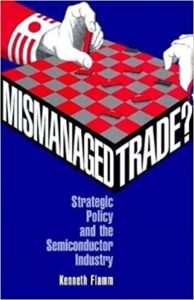The Drug War’s Perverse Toll
Bob Dole remarked in his acceptance speech at the 1996 Republican National Convention that “the root cause of crime is criminals.” The tautology and its implications-more prisons, longer sentences, tougher judges-made for a good applause line, though not the wisest course of action. Dole and his fellow Republicans were closer to the truth when they talked about the superiority of the family to the state as a means of moral development and social control.
The root cause of crime, or at any rate violent crime, is the failure of families to shape and restrain the behavior of young men, who are responsible for much more than their share of murders, robberies, and other serious offenses. Yet not all young men are criminally inclined. Those who are raised in intact families and who then marry and become parents themselves, thereby acquiring a familial stake and the responsibilities that go with it, do not require expensive legal deterrence (or medical treatment) as often as those who do not. Societies that attempt to control behavior by relying on police and prisons rather than families have more crime and heavier taxes, plus ever larger outlays for private security. The great fiscal virtue of attentive parenting and matrimonial stability is that they are by far the cheapest way to maintain social order.
Heavy reliance on the criminal justice system can also reach the point where it undermines family life. Imprisoning a large number of men distorts the marriage market and thereby increases the likelihood of illegitimacy and discourages the formation of families. This is especially true for groups that have low gender ratios, the most important group being blacks in inner cities. Criminal justice reform-in particular, reform of drug laws and drug enforcement tactics-can help to restore balance to the black marriage market. Making the number of marriageable black men and women more nearly equal is a necessary, though not a sufficient, condition for a long-term reduction in the high levels of criminal violence and social disorder that plague U.S. inner cities.
High gender ratios and violence
The age and gender mix of any group or population tells us a good deal about its potential for violence and disorder. The most dangerous behavior, such as street fighting or drunken driving, occurs in the teens and twenties. A population with an unusually large number of young people, such as that of the United States in the late 1960s and 1970s, is bound to have higher rates of violence and disorder. So will populations that have too many men. Economic activities such as prospecting and ranching attract youthful male workers, producing demographic anomalies such as mining camps and cattle towns. The relative absence of women, children, and old people and the ensuing surplus of young bachelors create a pathological tangle of drunkenness, violence, gambling, prostitution, disease, neglect, and early death.
Consider the nineteenth-century U.S. frontier. Religious colonies and family farms were placid enough, but frontier boom towns were very violent places. Nevada County, California, which was full of boisterous mining camps where at least 9 out of 10 residents were male, had an average annual homicide rate of 83 per 100,000 population in the early 1850s. Leadville, a Colorado mining town, had a rate of 105 per 100,000 in 1880. Fort Griffin, a Texas frontier town frequented by cowboys, buffalo hunters, and soldiers, had an even higher rate of 229 per 100,000 during its boom years in the 1870s.
Nonfrontier or postfrontier regions with more normal gender ratios experienced much less homicidal violence. Henderson County, a rural backwater in western Illinois, had an average annual rate of 4.3 homicides per 100,000 population during 1859-1900, or just 19 murders in over 40 years. Two eastern cities, Boston and Philadelphia, had criminal homicide rates of 5.8 and 3.2 per 100,000 in the two decades after 1860. By comparison, the average rates for Boston and Philadelphia in the early 1990s were 19.1 and 28.6 per 100,000. Frontier towns with abnormally high gender ratios and a surfeit of young single men thus had exceptionally high murder rates in comparison to cities in their era as well as to cities in our own.
New South Wales, Australia, was founded by the British in 1788 as a penal colony to replace their lost American dumping grounds. Immigration gave New South Wales a heavily masculine population. Initially four-to-one male, it fluctuated between three- and two-to-one male over the next half century. The results were widespread drunkenness, prostitution, corporal punishment, and lethal violence, both among the colonists and against the Aborigines. Peter Grabosky, who compared criminal statistics from New South Wales between 1826 and 1893 to economic conditions, gender distribution, urbanization, police manpower, and police expenditures, concluded that rates of serious crimes against persons and property were almost solely a function of the male overage of the population. Other variables virtually did not matter. In New South Wales as in nonfarming areas of the U.S. frontier, social problems grew out of a skewed masculine population. When it became more normal, so did the rates of violence and disorder.
Low ratios and illegitimacy
It does not follow, however, that the rate of murder or any other crime is simply a linear function of the ratio of males to females. Low gender ratios-that is, when females are substantially more numerous than men-can also give rise to social disorder. This is mainly because low gender ratios encourage illegitimacy and divorce.
Most illegitimate children lack not only fathers and decent family incomes but the whole array of socially obligated kin, such as paternal grandparents, aunts, or uncles, who come with an acknowledged marriage and who ordinarily provide encouragement, advice, and support for young people. Illegitimate children lack adult supervision and are more likely to run in gangs. Most critically, illegitimate children miss the opportunity to experience discipline and modeling from both biological parents, including what it is like to grow up in a two-parent family. They are thus less like to marry and stay married than those raised in intact families. They are more prone to irresponsible and criminal behavior, because their moral horizons, habits of self-control, and economic opportunities have been truncated at both ends of the reproductive cycle.
Many causes have been suggested for the rise of illegitimacy, including welfare dependency, an entrenched culture of poverty, the loss of industrial jobs, and economic frustration. But there is yet another explanation, one that is both surprising and surprisingly powerful: Illegitimacy and female-headed households are common wherever, as in the black inner city, a chronically low gender ratio exists.
The notion that sexual and marital behavior are connected to the balance of men and women dates back to the work of the sociologist Willard Waller, who studied U.S. courtship during the 1930s. Waller thought sexual relationships were governed by the principle of “least interest.” The person who had less to lose-who was less in love, less dependent-exercised power over the other person, who was more willing to sacrifice to keep the relationship alive. The gender ratio figured in the least-interest equation because, if one person were in the minority, he or she had more alternative partners available. The minority party had less to lose if the relationship broke up and hence could make more demands.
The principle of least interest, rechristened “dyadic power,” turned up again in Marcia Guttentag and Paul Secord’s 1983 study Too Many Women? They argued that in high-gender-ratio situations, most women would prize their virginity and expect to marry up, marry young, stay home, and bear large numbers of legitimate children, at least in cultures where contraception was not yet common. Low-gender-ratio situations produced the opposite pattern: more premarital sex and illegitimacy; more female-headed households and female labor-force participation; later marriages for women; and more divorce.
Historical studies have turned up interesting examples of dyadic power. Italian women in nineteenth-century Rochester, New York, married sooner than their counterparts in Southern Italy and were more successful in resisting premarital sexual advances. A firm “no” did not hurt their chances of marrying well because they were greatly outnumbered by Italian immigrant males who were denied the alternative of WASP brides by nativist prejudice. The reverse was true in impoverished Southern Italy, where men were scarcer than women because of the overseas exodus. Hence they exercised greater dyadic power.
Sociologists Scott South and Katherine Trent’s systematic study of late-twentieth-century data from 117 countries found much the same thing. Controlling for differences in socioeconomic development, women in low-gender-ratio nations consistently had lower rates of marriage and fertility and higher rates of divorce and illegitimacy. Given favorable sexual odds, it seems that men everywhere act like, and produce, bastards.
Black America, which has had the lowest gender ratio of any of the major U.S. ethnic groups for the past century and a half, is no exception. The difference begins at birth. The gender ratio for black newborns is typically about 102 or 103 males for every 100 females, as compared with 105 or 106 for whites. The higher mortality of black male children and young men causes the gap to widen with age. At ages 20 to 24, the black gender ratio is 97, the white 105. By ages 40 to 44, the black ratio is 86, the white 100.
The gender ratio alone understates the extent of the problem. Young black urban men are far more likely than whites of comparable age to be unemployed, imprisoned, institutionalized, crippled, addicted, or otherwise bad bets as potential husbands. The post-civil rights era increase in interracial marriages has further contributed to the unavailability of black men, who take white wives twice as often as black women take white husbands.
Dyadic power equals sexual leverage. Black women unwilling to engage in premarital sex are at a huge disadvantage in an already tight market. Black men know this and can easily exploit the situation. But such sexual opportunism increases the prospect of illegitimacy, and illegitimacy feeds the problems of poverty, unemployment, and violence that make the inner cities so dangerous.
It seems counterintuitive that low gender ratios are fraught with social peril. Shouldn’t fewer men translate into less crime? Yes, but as sociologists Steven Messner and Robert Sampson have shown, the effect of fewer men is, over time, more than canceled out by the effects of increased illegitimacy and family disruption. There may be fewer males in the ghetto, but because they are less often socialized in intact families or less likely to marry and stay married, they more often get into trouble.
So the relationship between the gender ratio and violence turns out to be paradoxical. Too many or too few women can both lead to problems. The smaller the disparity, the smaller the problems. Historically, communities with just a few “extra” men or women could assign them to existing households, as was required by law of bachelors in Puritan New England. But large disparities have proved more disruptive and harder to handle. The best case clearly is a marriage market in equilibrium. When a population’s structure is conducive to marriage and family stability, it is conducive to social order.
Mass incarceraton and its costs
But marriage and family formation are not simply a function of the raw gender ratio. To be eligible for marriage, a young man has to be in circulation, not locked away somewhere. Yet by 1995, one of every three black American men in their twenties, the prime age for marriage, was in prison, on probation, or on parole. By comparison, only about one black woman in 20 was in similar straits.
Let’s look more closely at the numbers. On any given day in 1994, more than 787,000 black men in their twenties were under some form of criminal justice control. Of these, 306,000 were behind bars; 351,000 on probation; and 130,000 on parole. An unknown but not inconsiderable number were hiding from arrest warrants. The cost to taxpayers for the criminal justice control of these black men is more than $6 billion per year. Of course, those among them who are behind bars are not committing street crimes, which is the point Bob Dole was making. Indeed, some observers think that the mass incarceration of young black men is what is behind the decline in violent crime rates in the past five years. Other theorists have stressed the progressive aging of the baby boomers; a temporary (and soon-to-be-reversed) decline in the relative number of teenagers; a healthier economy; the stabilization of urban drug markets; more aggressive police tactics; the proliferation of trauma centers (which, by saving more gunshot victims, lowers the homicide rate); and the notion that the number of violent crimes has, in some neighborhoods, fallen below an epidemic “tipping point.” None of these theories is exclusive of the others.
Yet even if mass incarceration turns out to be causally related to the recent decline in violent crime rates, we need to consider its long-term social costs. The doubling of the inmate population since 1985 has diverted dollars from education, particularly state-supported higher education. Inflation-adjusted funding per credit hour has eroded as penal outlays have increased, thereby diminishing young people’s future employment (and hence marital) prospects.
Children whose parents are in jail have suffered. More than 60 percent of male inmates have children, legitimate or otherwise, and most of those children are under18. The absence of their fathers and whatever financial and emotional support they might have provided does not improve their life prospects. Neither do their parents’ criminal records. Marc Mauer and Tracy Huling, who assembled the black prison numbers, have argued that young men who have done time are at an economic and marital disadvantage when released. In a sense, they take their bars with them. A prior criminal record reduces their chance of finding gainful employment, making them less attractive as marriage partners and less able to provide for their children.
The most subtle effect of the prison boom, however, has been the unintended lowering of the ratio of marriageable men to women, particularly, as we have seen, in the black community, where young men are less numerous to begin with. The smaller the ratio, the greater men’s sexual bargaining power and hence the likelihood of illegitimacy and single-parent families, which are the root causes of violence and disorder in the inner city. The solution makes the problem circular.
This doesn’t mean that we should tear down the prisons, but it does mean that we should think carefully about how and why these resources are used. The drug war, the single most important reason for the increasing rate of imprisonment among young black men, is the obvious place to begin.
The drug war’s toll
First, there is the problem of racial bias in drug arrests, prosecutions, and sentencing. In 1992, blacks made up about 12 percent of the U.S. population and about 13 to 14 percent of those who used any illicit drug on a monthly basis. Yet more than a third of all drug possession arrests, more than half of all possession convictions, and three-quarters of state prison sentences for possession involved blacks.
In Georgia, where the organization Human Rights Watch has made a detailed study, more whites than blacks were arrested for drug offenses before the drug war began in the mid-1980s. By the end of the decade, blacks were arrested for drug offenses more than twice as often as whites, even though blacks made up less than a third of the population. From 1990 through 1995, the black drug arrest rate per 100,000 was more than five times that of whites.
For sale or possession of marijuana, blacks were arrested at roughly twice the rate of white Georgians. For cocaine possession, blacks were arrested at a rate 16 times that of whites; for cocaine sale, 21 times. Marijuana and cocaine use and sale were more widespread in the black community, but the arrest rates were well beyond anything suggested by national prevalence data. Between 1991 and 1994, blacks made up from 13 to 18 percent of marijuana users and 18 to 38 percent of cocaine users.
The arrest-rate disparity was partly a matter of convenience. Black users and dealers, who often sell outdoors and to strangers, were more visible and easier to arrest in street sweeps. “When you want to catch fish,” explained one Georgia official, requesting anonymity, “you go where the fishing is easiest.” The pond, however, is so well stocked that the fishing has little effect: Lower-level black cocaine dealers are easily and quickly replaced. Indeed, they have been known to “drop a dime” on their rivals simply to eliminate competition and expand their own turf.
Though wholesale black arrests for cocaine dealing have not stopped street trafficking, they most assuredly have had an impact on the black male inmate population, beginning with the local lockup. A study of 150,000 criminal cases in Connecticut found that bail for black and Hispanic men averaged twice that of whites for the same offense. Those who could not afford the higher rates stayed in jail. Nor did their chances improve in the pretrial phase. A California study of 700,000 cases found that blacks and Hispanics were less likely than whites to have their charges dropped or cases dismissed, to plead out cheaply, or otherwise benefit from prosecutorial or judicial discretion.
But the most conspicuous (and correctable) problem is that federal and many state laws make even small-time drug dealing a big-time offense carrying a stiff sentence. This is especially true of crack, the drug war’s bête noir. In 1986, Congress enacted a sentencing provision that required only 1/100 of the amount of crack cocaine to trigger the same penalty as powder cocaine. Deal 500 grams of powder cocaine, get five years; deal five grams of crack, ditto. The result was that, by 1993, federal prison sentences for blacks averaged 41 percent longer than those of whites, with the crack/powder distinction being the major reason for the difference. Pharmacologically absurd and racially unjust on the face of it, the 100-to-1 ratio has been a policy fiasco of the first magnitude, compounded by Congress’s politically motivated refusal to heed the U.S. Sentencing Commission’s advice to drop it.
This criticism should not be confused with a call for legalization. The original point of the drug war, which began in 1986, was to mount a high-visibility campaign, orchestrated by the White House, to restrict and stigmatize drug use through increased education, prevention, treatment, and enforcement efforts. This was a reasonable goal and met with some success, notably among young people and adults who use drugs only accasionally. In the 1990s, the drug war’s leadership and moral purpose have disappeared, and education, prevention, and treatment dollars are harder to come by. That has left as the drug war’s principal enduring legacy the harshest penal aspects of the 1986 and 1988 federal antidrug laws. Intentionally or not, these laws and their state equivalents have functioned as a kind of giant vacuum cleaner hovering over the nation’s inner cities, sucking young black men off the street and into prison. More rational, flexible, and fiscally prudent state and federal sentencing policies within the context of a balanced drug war-the prescription of a majority of the nation’s police chiefs-would help to redress the scarcity of marriageable black men and other long-term problems associated with mass incarceration.
Beyond criminal-justice reform
Note the assumption here: Young black men who were thus kept out of prison would work at legitimate jobs and use their wages to marry and raise families. Social scientists such as Michael Gottfredson and Travis Hirschi, who emphasize the defective socialization of criminals, have expressed skepticism on this point. “People with low self-control will have difficulty meeting the obligations of structured employment,” they wrote in their 1990 book A General Theory of Crime, “just as they have difficulty meeting the obligations of school and family.” Scratch a dealer, find a sociopath.
But not a lazy sociopath. Practically every ethnographer or economist who has studied young minority drug dealers has been struck by their willingness to work hard. Drug dealing is an entrepreneurial activity, and it is easy to imagine this sort of energy and risk-taking succeeding in a legal enterprise. In fact, many young dealers keep one foot in the legitimate sector. Peter Reuter and his associates found in a 1985-87 study that 63 percent of the dealers in Washington, D.C., sold on less than a daily basis and that three-quarters earned money from legitimate jobs.
But if legitimate jobs were available, why did they sell drugs? The ethnographer Philippe Bourgois argues that crack’s appeal to young minority dealers is as much cultural as economic. The crack business is truly their own. There are no white or “A-rab” bosses to placate; no strictures on language, dress, or demeanor; no forms to fill out; no taxes to pay. Though Bourgois studied Latino dealers, the same applies to many young blacks. “Why should I work in some old dirty noisy car factory?” demanded one 17-year-old Detroit gang member. “Who needs a job, when all you got to do is get with a crew that’s rolling? . . . Me, I got it all worked out, later for all that school, job, marrying shit.”
The black community has long been split between what sociologist Elijah Anderson calls “the culture of decency” and “the culture of the street.” The former values the same things as most middle- and working-class Americans: close if not invariably traditional nuclear families, financial stability, religion, the work ethic, and getting ahead. It disapproves of that which middle America disapproves: crime, drug abuse, and teenage pregnancy.
The culture of the street is disdainful of conventional values such as marriage and sexual restraint. Within the peer group, often a neighborhood gang, sexual conquest provides impoverished young black men with a libidinous outlet, reinforces masculine identity, and enhances their standing. Marriage and good providership do not. The object, writes Anderson, is to smoothly “play” the girls but never to “play house.” They hit on vulnerable, naive, and often fatherless young women and then run, maintaining personal freedom and independence from matrimonial ties. When such ties exist, they are on the young man’s terms.
Sending fewer black men to prison, in short, is not going to solve the problem by itself. Black families are in trouble for many reasons, among them labor-market changes, a legacy of welfare dependency, racial and class segregation, and the inversion of traditional values, both within the street culture of the ghetto and the larger, eroticized, commercial culture of the mass media. It isn’t enough to keep young men eligible for marriage by keeping them out of jail. They also need jobs and the will to keep at those jobs and to base family life on them.
Yet there is good statistical evidence that the low ratio of marriageable black males to females, exacerbated by the drug war and the sentencing revolution of the 1980s and 1990s, has encouraged illegitimacy and family disruption. Robert Sampson, who analyzed census data from 171 cities, found that “the strongest predictor by far” of black family disruption was the gender ratio, followed by black male employment. Family disruption, Sampson hypothesized, gives rise to violence, which reduces the effective gender ratio directly (census takers don’t count dead men) and indirectly through imprisonment, which simultaneously hurts male job prospects.
The crime and violence stemming from family disruption have not only landed more young black men in prison or the morgue, they have landed more law-and-order politicians in office-another and by no means the least way in which the problem has become circular. Since 1980, if not before, the electoral dividends of appearing tough on crime have been more appealing to U.S. politicians than the long-term social dividends of flexible and reasonable criminal sanctions. Getting rid of the 100-to-1 ratio; revising sentencing guidelines to permit greater judicial discretion, including referral of more drug users into treatment; eliminating mandatory minimum sentences for lower-level trafficking offenses-these and other reforms will require real political courage. This is especially so because criminal justice reform is no panacea. It is best understood as a necessary though not a sufficient condition for the long-term diminishment of violence and disorder in the inner cities, America’s new violent frontiers.

 The Cold War may be over, but espionage apparently is still thriving. Now, however, it’s economic espionage. Former FBI and CIA officials have stated that “we’re finding intelligence organizations from countries we’ve never looked at before” and that foreign intelligence agencies of traditionally friendly countries “are trying to plant moles in American high-tech companies and search briefcases of American businessmen traveling overseas.” Suggested U.S. responses include such drastic measures as high import tariffs or economic sanctions against countries whose governments spy on U.S. businesses. Before taking such heavyhanded actions, the U.S. government needs to acquire more information about what other governments are doing and develop a better understanding of how these activities affect the well-being of the United States.
The Cold War may be over, but espionage apparently is still thriving. Now, however, it’s economic espionage. Former FBI and CIA officials have stated that “we’re finding intelligence organizations from countries we’ve never looked at before” and that foreign intelligence agencies of traditionally friendly countries “are trying to plant moles in American high-tech companies and search briefcases of American businessmen traveling overseas.” Suggested U.S. responses include such drastic measures as high import tariffs or economic sanctions against countries whose governments spy on U.S. businesses. Before taking such heavyhanded actions, the U.S. government needs to acquire more information about what other governments are doing and develop a better understanding of how these activities affect the well-being of the United States. In the late 1980s, Kenneth Flamm, an economist at the Brookings Institution, published two highly influential books on government’s role in the development of the computer industry. In Targeting the Computer (1987) and Creating the Computer (1988), Flamm made a persuasive case that—contrary to the arguments of authors such as George Gilder and business executives such as T. J. Rodgers of Cypress Semiconductors—government had played a significant role in creating the computer industry as well as other high-technology industries in the United States.
In the late 1980s, Kenneth Flamm, an economist at the Brookings Institution, published two highly influential books on government’s role in the development of the computer industry. In Targeting the Computer (1987) and Creating the Computer (1988), Flamm made a persuasive case that—contrary to the arguments of authors such as George Gilder and business executives such as T. J. Rodgers of Cypress Semiconductors—government had played a significant role in creating the computer industry as well as other high-technology industries in the United States. The Betrayal of Science and Reason is the most important rejoinder to date to the “brownlash” (as the Ehrlichs call it) of anti-environmental writing. The bulk of the book is devoted to a systematic refutation of the main theses of the anti-environmental crusade. As such, it is indispensable reading for everyone concerned with the environmental debate, especially those who believe that the global ecological crisis is a mirage. However, although the book is successful in advancing the green position and discrediting the brown, it is disingenuous on the subject of environmentalism’s own streak of antiscientific bias. If the strengths of the book lie in what the Ehrlichs say, its problems arise from what they leave out.
The Betrayal of Science and Reason is the most important rejoinder to date to the “brownlash” (as the Ehrlichs call it) of anti-environmental writing. The bulk of the book is devoted to a systematic refutation of the main theses of the anti-environmental crusade. As such, it is indispensable reading for everyone concerned with the environmental debate, especially those who believe that the global ecological crisis is a mirage. However, although the book is successful in advancing the green position and discrediting the brown, it is disingenuous on the subject of environmentalism’s own streak of antiscientific bias. If the strengths of the book lie in what the Ehrlichs say, its problems arise from what they leave out. In looking critically at the rigor of quantitative analysis, the book treads on ground that has recently become very delicate. One initial reaction to this study could be to dismiss (or denounce) it as yet another attempt to “demystify” quantification, thus undermining public faith in scientific objectivity. But the historical approach protects the book against such simplistic interpretations. In the examples, we witness a wide variation among the quantitative arguments and their motivations. Also, we are clearly shown the complexity and nuance in the drives for this sort of objectivity, as well as the different degrees of success that they can achieve.
In looking critically at the rigor of quantitative analysis, the book treads on ground that has recently become very delicate. One initial reaction to this study could be to dismiss (or denounce) it as yet another attempt to “demystify” quantification, thus undermining public faith in scientific objectivity. But the historical approach protects the book against such simplistic interpretations. In the examples, we witness a wide variation among the quantitative arguments and their motivations. Also, we are clearly shown the complexity and nuance in the drives for this sort of objectivity, as well as the different degrees of success that they can achieve. Philip Kitcher’s The Lives to Come is an introduction to some of the most important legal, ethical, and philosophical issues raised by this revolution in molecular biology. Fluently written in a manner accessible to any lay reader and free of either scientific or philosophical technicalities, it provides a series of compelling explorations of key philosophical issues. For all its accessibility, however, this is a sophisticated book. Its commonsense arguments are based on an important series of philosophical discussions that Kitcher is able to navigate through and draw on with ease.
Philip Kitcher’s The Lives to Come is an introduction to some of the most important legal, ethical, and philosophical issues raised by this revolution in molecular biology. Fluently written in a manner accessible to any lay reader and free of either scientific or philosophical technicalities, it provides a series of compelling explorations of key philosophical issues. For all its accessibility, however, this is a sophisticated book. Its commonsense arguments are based on an important series of philosophical discussions that Kitcher is able to navigate through and draw on with ease. As these figures indicate, no matter who wins in November, prohibition and punishment will continue to be the major focus of the drug war. But is this approach optimal, or even feasible, in today’s increasingly interdependent world? Paul Stares, a senior fellow at the Brookings Institution, makes an impressive effort to redraw the battle lines of the drug war in Global Habit: The Drug War in a Borderless World.[Ed.: Check title; it is The Drug Problem at the beginning of the review.] Stares argues that the prohibitive or negative philosophy on which the United States and most countries of the world have based their drug policies is inappropriate at a time when production, trafficking, and consumption are rapidly increasing worldwide. Instead, Stares proposes emphasizing positive measures. Wisely ignoring the endless and ultimately fruitless debate between supply-reduction and demand-reduction strategies, he would target supply and demand but would emphasize measures that provide positive alternatives to drug use and trafficking. Stares supports his proposal with an expert analysis of the underlying trends and market dynamics that make, and will continue to make, the global drug problem so intractable. When he turns his attention to policy prescriptions, however, he constrains himself by working within the confines of the current debate, and thus his efforts are ultimately disappointing.
As these figures indicate, no matter who wins in November, prohibition and punishment will continue to be the major focus of the drug war. But is this approach optimal, or even feasible, in today’s increasingly interdependent world? Paul Stares, a senior fellow at the Brookings Institution, makes an impressive effort to redraw the battle lines of the drug war in Global Habit: The Drug War in a Borderless World.[Ed.: Check title; it is The Drug Problem at the beginning of the review.] Stares argues that the prohibitive or negative philosophy on which the United States and most countries of the world have based their drug policies is inappropriate at a time when production, trafficking, and consumption are rapidly increasing worldwide. Instead, Stares proposes emphasizing positive measures. Wisely ignoring the endless and ultimately fruitless debate between supply-reduction and demand-reduction strategies, he would target supply and demand but would emphasize measures that provide positive alternatives to drug use and trafficking. Stares supports his proposal with an expert analysis of the underlying trends and market dynamics that make, and will continue to make, the global drug problem so intractable. When he turns his attention to policy prescriptions, however, he constrains himself by working within the confines of the current debate, and thus his efforts are ultimately disappointing. In Can Democracies Fly in Space?, W. D. Kay, a political scientist at Northeastern University, argues that “something is terribly wrong” with the U.S. civil space program. It is in trouble, he believes, because the U.S. political system is ill-suited to sustaining large-scale technological enterprises. He is right that the space program is in trouble and that the United States supports such undertakings poorly. It is not as clear, however, that the woes of the National Aeronautics and Space Administration (NASA) can be laid at the doorstep of political dysfunction.
In Can Democracies Fly in Space?, W. D. Kay, a political scientist at Northeastern University, argues that “something is terribly wrong” with the U.S. civil space program. It is in trouble, he believes, because the U.S. political system is ill-suited to sustaining large-scale technological enterprises. He is right that the space program is in trouble and that the United States supports such undertakings poorly. It is not as clear, however, that the woes of the National Aeronautics and Space Administration (NASA) can be laid at the doorstep of political dysfunction.